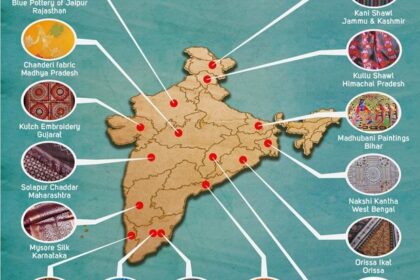
Am very fond of sweets and Rasogollas have always been one of my favourites and hence when I saw this article in the newspapers of Bengali rasogollas being given Geographical Indication(GI) and Orissa disputing the same citing that rasogollas have been offered at Puri Jagannath temple since 12th century Geographical Indication immediately caught my eye
So what is this Geographical Indication?
A geographical indication (GI) is a sign used on products that have a specific geographical origin and possess qualities or a reputation that are due to that origin. In order to function as a GI, a sign must identify a product as originating in a given place. In addition, the qualities, characteristics or reputation of the product should be essentially due to the place of origin. Since the qualities depend on the geographical place of production, there is a clear link between the product and its original place of production
So while considering the claim of Bengali Rasgollas they were found to be more softer and had a softer texture and better chewiness
As per the descendants of Nobin Chandra Das who is often credited with the creation of the Bengal Rasgollas claim that while the Bengali rasgollas are made using cows milk from chenna the rasgollas made in the North are made with buffalo milk mixing maida and semolina and hence a huge difference in the taste and texture
A geographical indication right enables those who have the right to use the indication to prevent its use by a third party whose product does not conform to the applicable standards. For example, in the jurisdictions in which the Darjeeling geographical indication is protected, producers of Darjeeling tea can exclude use of the term “Darjeeling” for tea not grown in their tea gardens or not produced according to the standards set out in the code of practice for the geographical indication.
However, a protected geographical indication does not enable the holder to prevent someone from making a product using the same techniques as those set out in the standards for that indication. Protection for a geographical indication is usually obtained by acquiring a right over the sign that constitutes the indication.
Geographical indications are typically used for agricultural products, foodstuffs, wine and spirit drinks, handicrafts, and industrial products.
Like all intellectual property rights, the rights to geographical indications (GI) are enforced by the application of national legislation, typically in a court of law. The right to take action could rest with a competent authority, the public prosecutor, or to any interested party, whether a natural person or a legal entity, whether public or private. The sanctions provided for in national legislation could be civil (injunctions restraining or prohibiting unlawful acts, actions for damages, etc.), criminal, or administrative.
An indication of source can be defined as an indication referring to a country (or to a place in that country) as being the country or place of origin of a product. In contrast to a geographical indication, an indication of source does not imply the presence of any special quality, reputation, or characteristic of the product essentially attributable to its place of origin. Indications of source only require that the product on which the indication of source is used originate in a certain geographical area. Examples of indications of source are the mention, on a product, of the name of a country, or indications such as “made in ….”, “product of ….”, etc..
The concept of Geographical Indication has its orgins in the Paris Convention for the protection of Industrial Property in 1883 followed by a much more elaborate provision in the 1958 and is also covered under the agreement on Trade related aspects of Intellectual Property Rights (TRIPS)
India passed the Geographical Indication of goods (Registration and Protection ) Act in 1999 which came into force from Sept 2003
India has so far given 303 Geographical Indicator rights
Consumers are paying more and more attention to the geographical origin of products and many care about specific characteristics present in the products they buy. In some cases, the “place of origin” suggests to consumers that the product will have a particular quality or characteristic that they may value. Geographical indications (GI) therefore function as product differentiators on the market, by enabling consumers to distinguish between products with geographical origin-based characteristics and others without those characteristics.
Study on GI products in the European Union have found that they offer a premium of 2.2 times compared to non GI products.The premium was found to be maximum in the case of wines with a premium of 2.7 times while it was minimum of 1.6 times in the case of cheese.
While there is no disputing the importance of GI as a tool to protect the interest of small farmers ,craftsmen and manufacturers and to preserve the link of a particular product to a region it has a long way to go before it can be a financially remunerative intellectual property rights like patents



